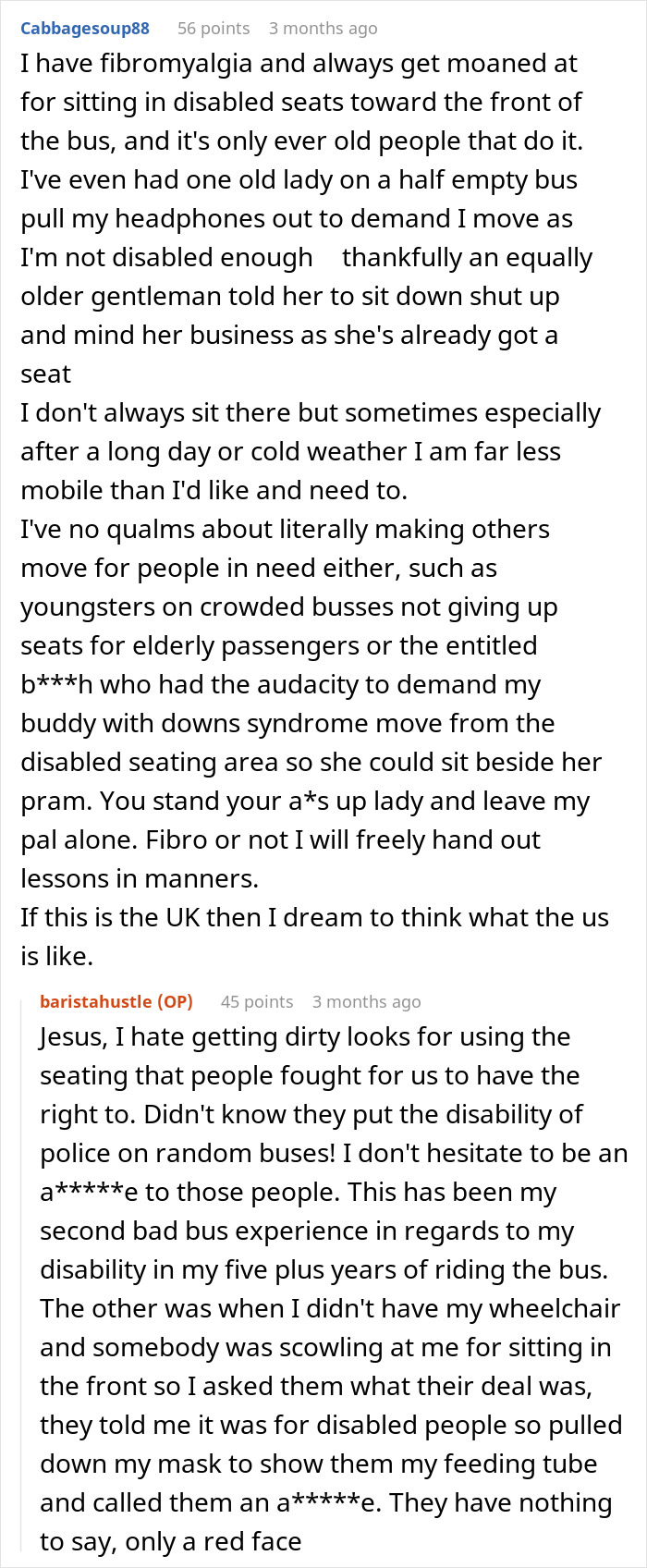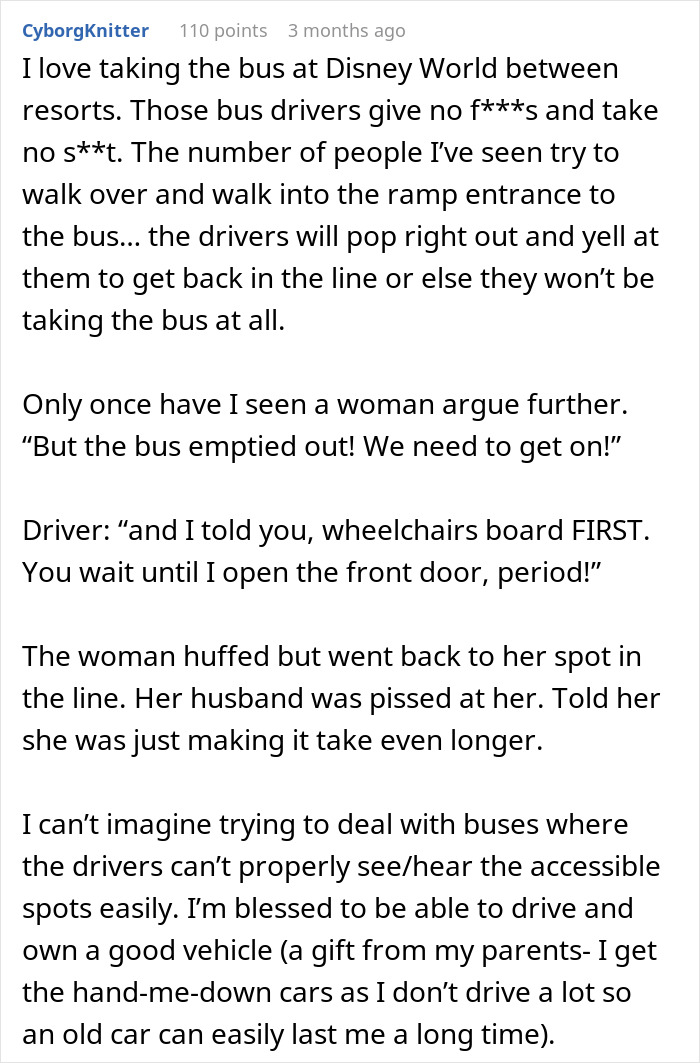Most of us keep our heads down and mind our own business while commuting via public transportation. I’m often staring out the window daydreaming or watching videos on my cell phone, and the only time I interact with anyone else on the bus is when I offer up a seat to someone who might need it more than I do.
But one person recently had an unfortunate experience with a fellow bus passenger who should have simply kept her mouth shut. Below, you’ll find the full story that was shared on Reddit detailing how an entitled mother decided that she deserved space on the bus more than a wheelchair user who was making the same commute, as well as a conversation with Karen Dennis, creator of The Next Best Thing to Mummy.
This person was minding their own business while riding the bus when they encountered an entitled mother

Image credits: Ivan Samkov / Pexels (not the actual photo)
But instead of placating the mom’s demands, they refused to back down
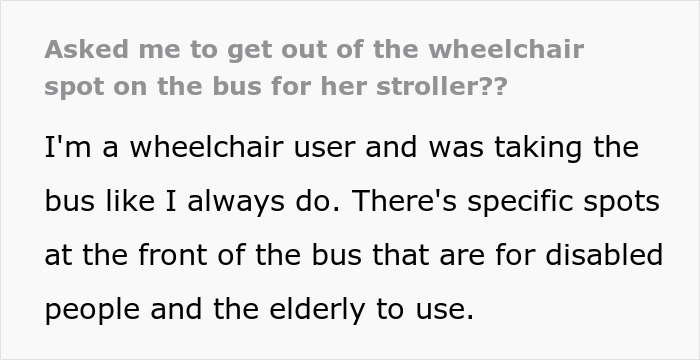



Image credits: Yan Krukau / Pexels (not the actual photo)

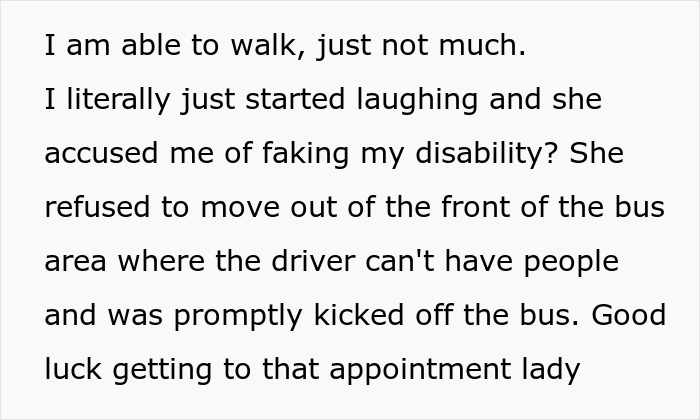
Image credits: baristahustle
Later, the passenger responded to a few readers and shared more information on the situation

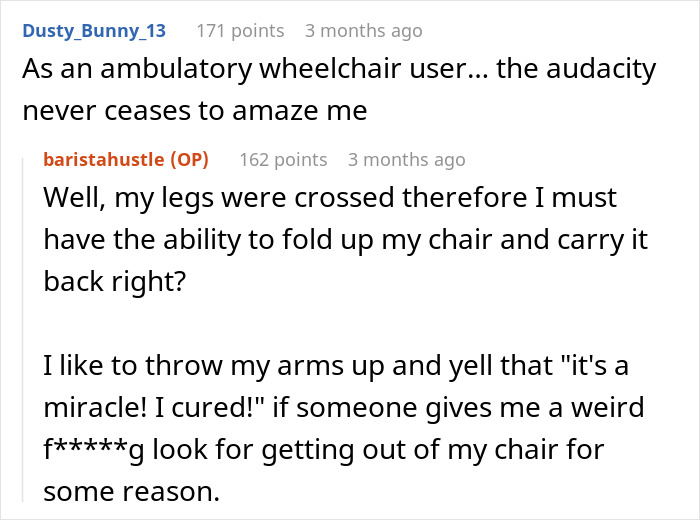

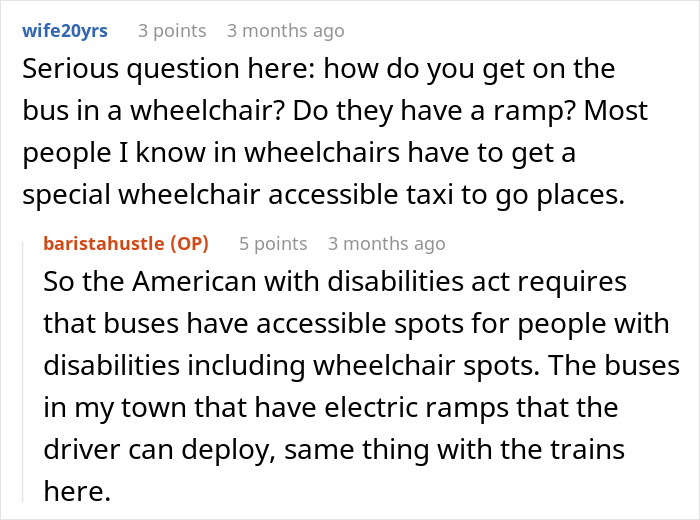
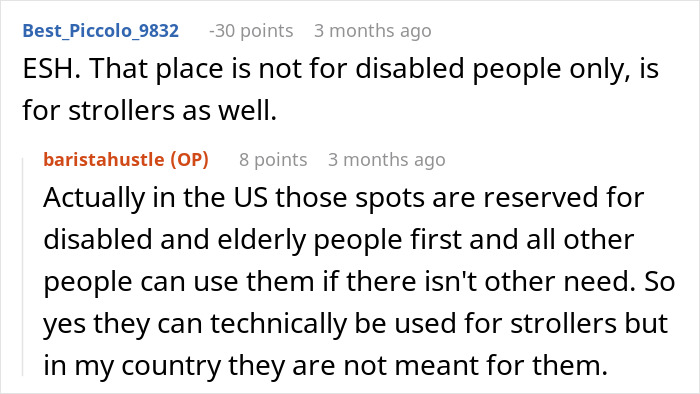
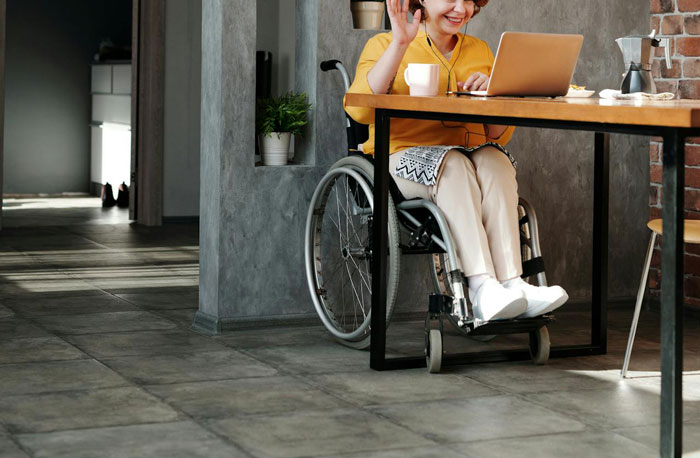
Image credits: Marcus Aurelius / Pexels (not the actual photo)
One in every six people around the world has a disability
It’s easy to take for granted how simple walking to the grocery store or riding the bus to work is if you don’t have any mobility issues. But the reality is that these simple tasks can quickly become complicated with a disability. According to the CDC, about 27% of adults in the United States have some form of disability, and 12.1% of Americans have a disability that impacts their mobility. Globally, one in every six individuals experiences a significant disability, the World Health Organization reports.
While having a disability can impact almost every facet of a person’s life, mobility issues certainly affect how an individual travels. To gain more insight on this topic, we reached out to blogger Karen Dennis, who runs The Next Best Thing to Mummy and who happens to be a wheelchair user herself.
Karen was kind enough to have a chat with Bored Panda and shared that she’s actually detailed her first experience of using the bus with a wheelchair on her blog right here. She recalled that there was a stroller in the designated disabled space when she first tried to board, but the driver asked for it to be folded and placed elsewhere to make room for her.
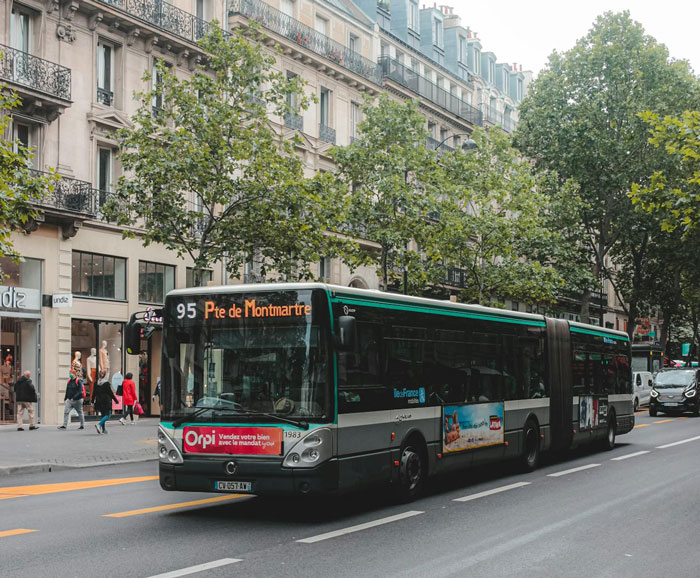
Image credits: Mathias Reding / Pexels (not the actual photo)
“I enjoy using the bus with my wheelchair, as it makes me feel independent”
Thankfully, Karen has had mostly positive experiences using the bus. “I am a lot more confident now and use it at least once a week to get into town to meet up with friends for coffee,” she shared. “I also go on a longer journey of about 30 miles round trip to visit my auntie who is in a nursing home.”
“Quite frankly, I enjoy using the bus with my wheelchair, as it makes me feel independent,” Karen added. “I have always found mothers with buggies to be very helpful. Most of the local mums who regularly use the same bus as me let me get on first, as it’s easier for me to maneuver into my space.”
“Once, a mum with a large buggy even got off at my stop, allowing me to get off and then she got back on,” Karen shared. “The bus drivers here have sometimes told mothers with buggies that they will have to move if they are using my space. There is a sign on the bus stating that wheelchair users have priority over prams and buggies.”
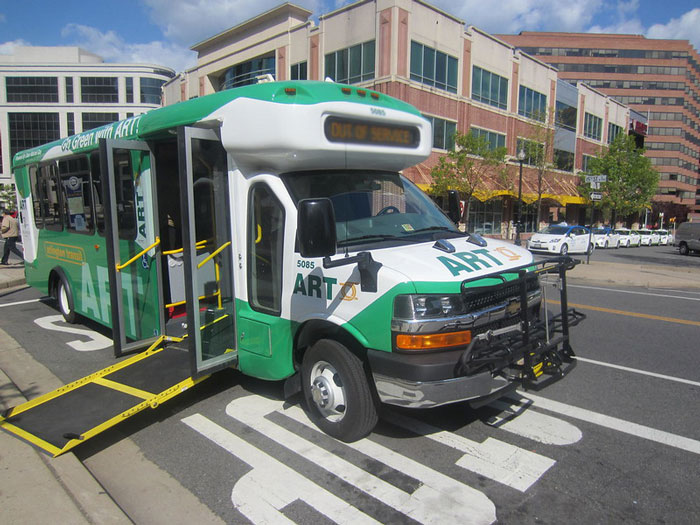
Image credits: Arlington County / Flickr (not the actual photo)
Many buses and drivers could do more to make transit accessible for those with disabilities
According to the Americans with Disabilities Act, all buses must have a designated priority seating area for those with disabilities, and those in wheelchairs will be able to strap themselves into these spots to ensure they don’t move around during the journey. In fact, bus drivers might also ask ambulatory passengers who were on board already to relocate if they’re occupying priority seats.
But just because buses are required to provide access for disabled riders doesn’t mean that the system is perfect. According to City Limits, many passengers in New York City don’t feel comfortable riding buses due to the burden of struggling to get on or dealing with drivers who don’t know what they’re doing.
“All of the other passengers [on the bus] besides me, but including me, as well as the passengers who are waiting on different stops…they’re all impacted when it takes the bus driver 15 minutes to get me on,” one Brooklyn resident says. “Until they solve this problem, the buses are going to continue to be slow.”
We would love to hear your thoughts on this situation in the comments below, pandas. Do you have experience riding on public transit as a person with mobility issues? Feel free to share, and then be sure to check out another Bored Panda article discussing similar issues right here!
Readers shared their thoughts on the story and called out the mother for her bad behavior


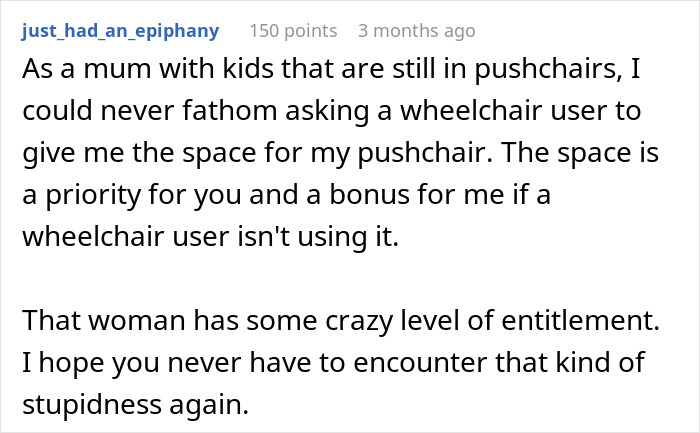


Some even had similarly frustrating stories of their own to share
